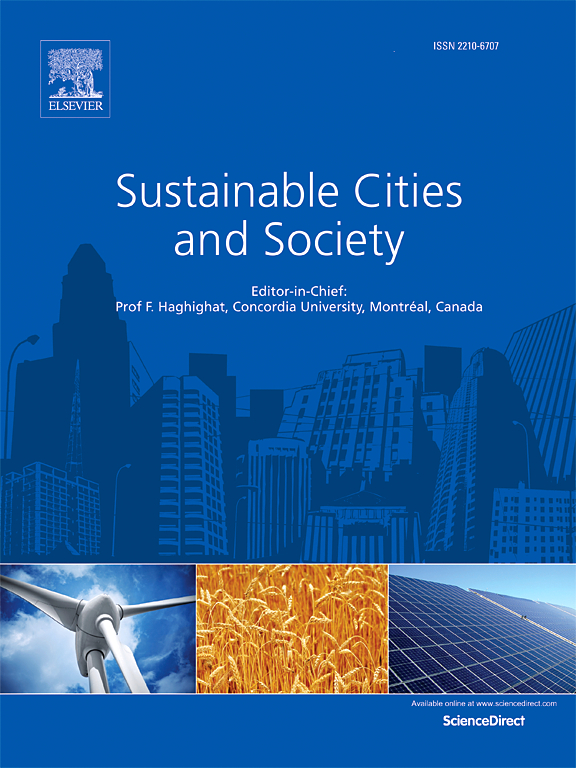Exploring the seasonal impacts of morphological spatial pattern of green spaces on the urban heat island
IF 10.5
1区 工程技术
Q1 CONSTRUCTION & BUILDING TECHNOLOGY
引用次数: 0
Abstract
Studying the influencing factors of urban heat island (UHI) is the key to improving the urban thermal environment. Research has shown that the spatial pattern of green space is an essential factor, but the impact of morphological spatial pattern of green spaces on UHI intensity has not yet been thoroughly explored. Compared to traditional landscape pattern indices, Morphological Spatial Pattern Analysis (MSPA) is more accurate and efficient in identifying different morphological types. Therefore, this study takes Nanjing, China as a case study and combines MSPA with landscape indices to analyze the spatial patterns of seven green space morphological types. Pearson's coefficients and Random Forest models were used to quantitatively assess their relationships with UHI intensity in different seasons. The results indicate that all green space morphological types are negatively correlated with UHI intensity, with the core being the most critical type to mitigate UHI, followed by perforation, and islet showing the weakest cooling capacity. Moreover, the impact of each green space morphological type on UHI exhibits seasonal differences, with summer being most prominent. The study further reveals that rational optimization of key morphological elements can significantly enhance their cooling effects. Expanding the core area is the most rewarding option to improve cooling, while improving the core connectivity, increasing the edge length and density of the core also yields high returns. Additionally, increasing the density, number, aggregation, and shape complexity of perforation is an effective strategy. In contrast, additional islets are unlikely to yield a significant benefit. These findings highlight that it is crucial to rationally consider their morphological spatial pattern in the actual planning and management of green spaces. This study provides valuable insights for formulating more refined UHI mitigation strategies.
求助全文
约1分钟内获得全文
求助全文
来源期刊

Sustainable Cities and Society
Social Sciences-Geography, Planning and Development
CiteScore
22.00
自引率
13.70%
发文量
810
审稿时长
27 days
期刊介绍:
Sustainable Cities and Society (SCS) is an international journal that focuses on fundamental and applied research to promote environmentally sustainable and socially resilient cities. The journal welcomes cross-cutting, multi-disciplinary research in various areas, including:
1. Smart cities and resilient environments;
2. Alternative/clean energy sources, energy distribution, distributed energy generation, and energy demand reduction/management;
3. Monitoring and improving air quality in built environment and cities (e.g., healthy built environment and air quality management);
4. Energy efficient, low/zero carbon, and green buildings/communities;
5. Climate change mitigation and adaptation in urban environments;
6. Green infrastructure and BMPs;
7. Environmental Footprint accounting and management;
8. Urban agriculture and forestry;
9. ICT, smart grid and intelligent infrastructure;
10. Urban design/planning, regulations, legislation, certification, economics, and policy;
11. Social aspects, impacts and resiliency of cities;
12. Behavior monitoring, analysis and change within urban communities;
13. Health monitoring and improvement;
14. Nexus issues related to sustainable cities and societies;
15. Smart city governance;
16. Decision Support Systems for trade-off and uncertainty analysis for improved management of cities and society;
17. Big data, machine learning, and artificial intelligence applications and case studies;
18. Critical infrastructure protection, including security, privacy, forensics, and reliability issues of cyber-physical systems.
19. Water footprint reduction and urban water distribution, harvesting, treatment, reuse and management;
20. Waste reduction and recycling;
21. Wastewater collection, treatment and recycling;
22. Smart, clean and healthy transportation systems and infrastructure;
 求助内容:
求助内容: 应助结果提醒方式:
应助结果提醒方式:


